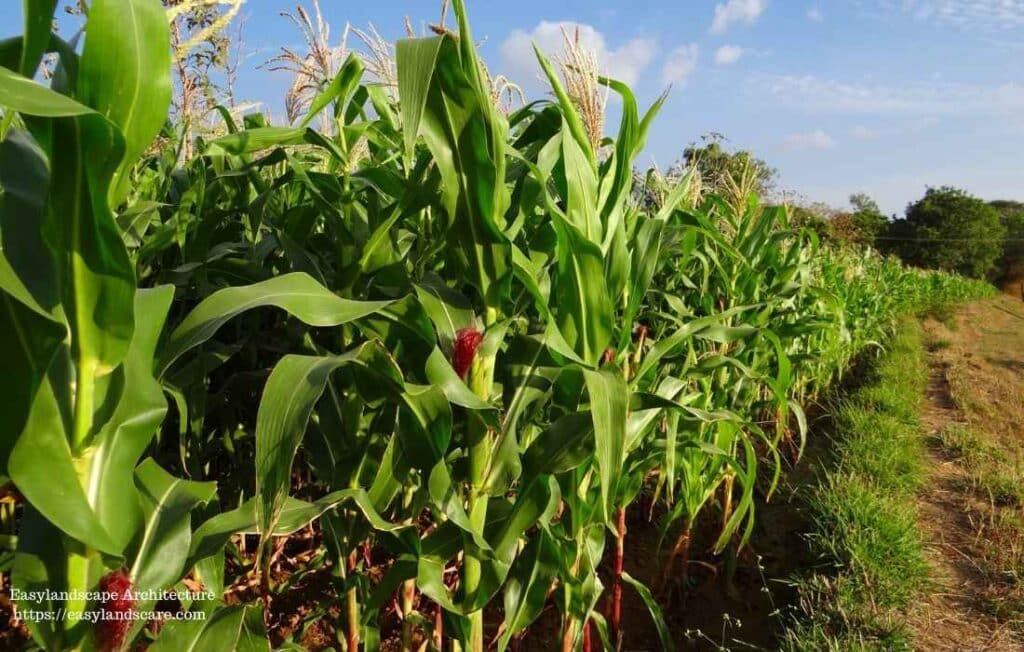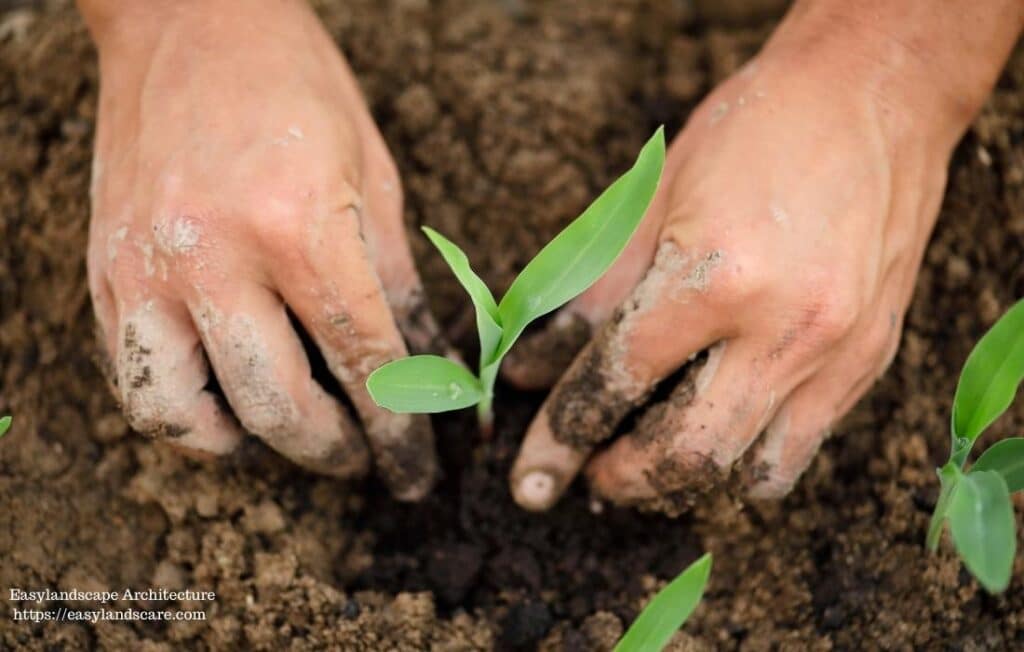Meet the Corn Plant
The Dracaena fragrans, commonly known as the Corn plant or False palm, is a beloved indoor plant cherished for its striking architectural foliage that resembles miniature palm trees. With its sturdy canes and arching, strap-like leaves, often featuring stripes of yellow or white, the Corn plant brings a touch of tropical elegance to homes and offices. Its relatively low-maintenance nature and air-purifying qualities make it a favorite among plant enthusiasts.

This comprehensive guide will cover all you need to know about Corn plant care, including light, watering, humidity, soil, and how to encourage its fragrant blooms, even though blooming is less common indoors.
Why Choose a Corn Plant?
Corn plants are visually striking and add a vertical element to indoor spaces. Their resemblance to small palm trees makes them a stylish addition to various décor styles. They are known for their ability to tolerate some neglect and their air-purifying capabilities, making them a practical and attractive choice for both beginners and experienced plant owners. While indoor blooming is rare, the potential for fragrant white or yellowish flowers adds an extra layer of appeal.
Essential Tips for Corn Plant Care

Light Requirements
Corn plant care involves providing the right lighting conditions:
- Bright, Indirect Light: Corn plants thrive in bright, indirect sunlight. While they can tolerate lower light conditions, their growth may be slower, and their variegation might be less pronounced. Avoid direct, intense sunlight, which can scorch their leaves.
- East or West-Facing Windows: These locations typically provide the gentle, filtered light that Corn plants prefer.
- South-Facing Windows (with Protection): If placing near a south-facing window, use sheer curtains to diffuse the strong midday sun.
- Rotate the Plant: Rotate your Corn plant periodically to ensure all sides receive even light, promoting balanced growth and preventing it from leaning excessively.
Watering and Moisture
Proper watering is crucial for Corn plant care:
- Allow Top Inch to Dry: Water your Corn plant when the top inch of the soil feels dry to the touch. Avoid overwatering, which can lead to root rot.
- Water Thoroughly: Ensure the water reaches the roots by watering thoroughly until it drains from the bottom of the pot. Discard any excess water in the saucer.
- Sensitive to Fluoride and Salts: Corn plants are sensitive to fluoride and excessive salts in tap water. If your tap water is heavily treated, consider using distilled water, rainwater, or letting tap water sit out overnight before watering to allow chlorine and some minerals to dissipate.
- Reduce Watering in Winter: During the dormant winter months, reduce the frequency of watering as the plant’s growth slows down. Allow the soil to dry out a bit more between waterings.
Humidity Preferences
Humidity plays a significant role in Corn plant care:
- Moderate Humidity: Corn plants appreciate moderate humidity levels. While they can tolerate average indoor humidity, increasing humidity can promote healthier growth and prevent brown leaf tips.
- Increase Humidity By:
- Humidifier: Using a humidifier is an effective way to maintain consistent humidity.
- Pebble Tray: Place the pot on a tray filled with pebbles and water (ensure the pot base is above the water level).
- Grouping Plants: Grouping plants together can create a more humid microclimate.
- Misting: Mist the leaves occasionally with room temperature, filtered water, especially during dry indoor periods.
Temperature Preferences
Maintaining the right temperature is key to Corn plant care:
- Average Room Temperatures: Corn plants thrive in average room temperatures between 18-24°C (65-75°F).
- Avoid Cold Drafts and Fluctuations: Protect your plant from cold drafts, sudden temperature changes, and proximity to heating or cooling vents, which can stress the plant and lead to leaf damage.
- Minimum Temperature: Avoid exposing the plant to temperatures below 13°C (55°F).
Soil Requirements

Choosing the right soil is essential for Corn plant care:
- Well-Draining, Rich Mix: Use a well-draining potting mix that is also rich in organic matter. A general-purpose potting mix amended with peat moss or compost works well.
- Good Aeration: Ensure the soil provides good aeration to prevent root rot.
- Repotting: Repot your Corn plant every 2-3 years, or when it outgrows its current container. Choose a pot that is only slightly larger than the previous one. Spring is the best time for repotting.
Fertilizer
Fertilizing is an important part of Corn plant care:
- Light Feeding During Growing Season: During the active growing season (spring and summer), feed your Corn plant every 2-4 weeks with a balanced liquid houseplant fertilizer diluted to half the recommended strength.
- Reduce or Stop in Winter: Reduce or stop fertilizing during the fall and winter months when the plant’s growth naturally slows down.
- Avoid Over-Fertilizing: Over-fertilizing can lead to brown leaf tips and other issues.
Pruning
Pruning helps maintain the health and appearance of your Corn plant:
- Remove Brown or Yellow Leaves: Regularly remove any brown, yellowing, or dead leaves to maintain the plant’s appearance and prevent potential issues.
- Control Height (If Necessary): Corn plants can grow quite tall over time. If you need to control their height, you can prune the top of the cane. New shoots will typically emerge below the cut. Use clean, sharp pruning shears.
- Best Time to Prune: Spring or early summer is the best time for more significant pruning.
Encouraging Blooms (Rare Indoors)
Encouraging blooms is a rewarding aspect of Corn plant care:
- Mature Plants: Corn plants typically need to be several years old and quite mature to bloom.
- Ideal Conditions: Providing consistently ideal conditions, including bright indirect light, consistent watering, and proper fertilization during the growing season, may increase the chances of blooming.
- Fragrant Flowers: If they do bloom, Corn plants produce clusters of highly fragrant white or yellowish flowers, usually in the late winter or early spring.
Propagation of Corn Plant

Propagating your Corn plant is an exciting part of Corn plant care:
- Cane Cuttings:
- Cut a healthy cane into sections, each at least a few inches long and containing at least one node (the slightly raised rings on the cane).
- Allow the cut ends to dry and callus over for a day or two.
- Plant the cane sections horizontally, partially buried in moist potting mix, or vertically with the top node just above the soil line.
- Keep the soil consistently moist and place in a warm, bright location (indirect light).
- New shoots should emerge from the nodes over several weeks.
- Tip Cuttings:
- Cut off a healthy top section of a cane that has leaves.
- Remove the lower leaves to expose the stem.
- Place the cutting in water or directly into moist potting mix with rooting hormone.
- Keep the water clean or the soil consistently moist and place in a warm, bright location (indirect light).
- Air Layering: This method can also be used for larger plants.
Common Issues and Troubleshooting in Corn Plant Care

Addressing common issues is vital for successful Corn plant care:
- Brown Leaf Tips:
- Fluoride or Salt Buildup in Tap Water: Use filtered or rainwater.
- Low Humidity: Increase humidity levels.
- Underwatering or Overwatering: Adjust watering habits.
- Dry Air from Heating Vents: Relocate the plant.
- Yellowing Leaves:
- Overwatering: Allow the top inch of soil to dry out before watering. Ensure good drainage.
- Nutrient Deficiency: Fertilize during the growing season.
- Old Age: Lower leaves naturally yellow and can be removed.
- Drooping Leaves:
- Underwatering: Water thoroughly.
- Overwatering/Root Rot: Check the roots and adjust watering.
- Cold Temperatures or Drafts: Move the plant to a warmer location.
- Pale or Faded Stripes:
- Insufficient Light: Move the plant to a brighter location with indirect light.
- Pest Infestations (Spider Mites, Scale, Mealybugs):
- Regular Inspection: Check leaves and stems regularly.
- Treatment: Wipe leaves, use insecticidal soap, or neem oil.
Tips for Successful Corn Plant Care

- Provide bright, indirect light.
- Water when the top inch of soil is dry, using filtered or rainwater if your tap water has high fluoride or salt content.
- Maintain moderate to high humidity.
- Keep the plant in a warm, stable environment, away from drafts.
- Use a well-draining, rich potting mix.
- Fertilize lightly during the spring and summer.
- Rotate the plant for even growth.
With its elegant appearance and relatively easy care, the Corn plant is a wonderful addition to any indoor plant collection. By providing the right conditions, you can enjoy its tropical charm and air-purifying benefits for years to come. Remember to pay attention to your water quality and provide adequate indirect light for a thriving Corn plant. If you liked this article, you might also be interested in our article on Best Indoor Plants: Top 15 Picks and Care Tips





